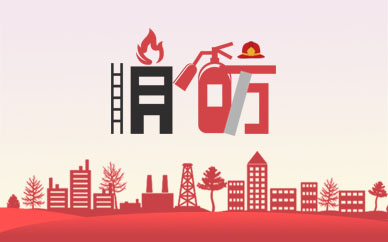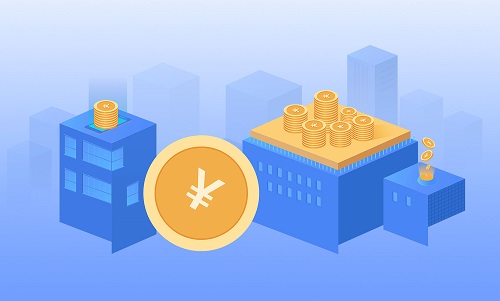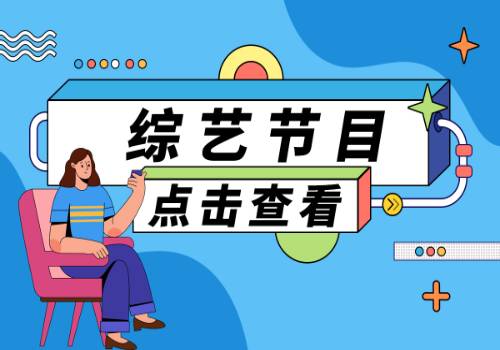China's economy resilient with potential and vitality 世界观热点
SHI YUMENG/FOR CHINA DAILY
 (资料图片仅供参考)
(资料图片仅供参考)
Editor"s note:The Chinese economy has strong resilience, great potential and is full of vitality. With the optimization of the COVID-19 management measures, the country"s overall economic performance is expected to pick up in 2023, with the economic growth rate back to reasonable range. Three experts share their views on the issue with China Daily.
Nation reaffirms pro-growth stance
By Ding Shuang
The annual session of the National People"s Congress, which started on Sunday, has reaffirmed Chinese policymakers" pro-growth stance set at the Central Economic Work Conference in December. In light of China"s disappointing economic performance due to the strict COVID-19 restrictions, the CEWC had called for an "overall improvement" of the economy, starting with making efforts to improve expectations and boost confidence. In this context, we (at Standard Chartered Bank) had expected the government to set reasonable as well as ambitious economic targets to stabilize market expectations.
This year, the growth target is around 5 percent. Last year, China"s GDP grew by only 3 percent, undershooting the target of 5.5 percent by a big margin. That"s why local governments have adopted more ambitious growth targets for 2023, ranging from 4.0-9.5 percent and averaging 6 percent.
The inflation target is around 3 percent (annual average). Consumer price index inflation averaged 2.0 percent in 2022, and we forecast a moderate rise to 2.3 percent this year, much below the target even after assuming a significant increase in service prices on reopening.
The unemployment rate target is maintained at 5.5 percent. In addition, the government has pledged to create 12 million new jobs during the year. And if the recovery remains on track, these targets should be within reach, although lowering the youth unemployment rate (16.7 percent in December 2022) will be more challenging, in our view, given an increase in college graduates to about 11.5 million this year.
In 2022, the government had to under-implement spending to meet the broad budget deficit target of 7.4 percent of GDP, because of revenue shortfalls. The combined total revenue from the general public budget and government funds budget dropped 6.3 percent (relative to a budgeted increase of 8.2 percent) because of a 23 percent plunge in land sales revenue, tax refunds and a slower economy.
Spending increased by only 3.1 percent compared with the budgeted expansion of 15.6 percent, and the government appears to have deployed all available resources, according to our estimate, including general bond proceeds of 3.37 trillion yuan ($490.59 billion) and local special bond proceeds of 4.15 trillion yuan.
This year the official budget deficit (covering only general public budget) is widened to 3 percent of GDP from 2.8 percent last year, but the broad deficit (also covering government funds budget) is likely to be scaled back. In December, the CEWC called on the government to "maintain necessary spending intensity while making the fiscal position sustainable and local government debt controllable". The 2023 budget points to the government intention to provide adequate support to boost growth while maintaining fiscal sustainability.
Under the general public budget, the focus of fiscal support this year appears to have shifted to expanding spending, versus tax cuts in 2022. In addition, the central government may ramp up transfers to local governments to increase their spending capacity without adding to their debt burden.
Under the government funds budget, the local special bond issuance quota is set at 3.8 trillion yuan (slightly below 3 percent of GDP), higher than the original 2022 quota of 3.65 trillion yuan but lower than the augmented quota of 4.15 trillion yuan.
While the broad deficit is likely to be smaller than in 2022, we think fiscal policy will become more effective in supporting economic activity, and the expected revenue recovery would allow total spending to grow faster in 2023.
Besides, quasi-fiscal operations by policy banks may be increased, if necessary, to finance key projects.
The government is likely to tackle the problem of local hidden debt (including that of local government financing vehicles, LGFVs) by asset disposal and/or the issuance of refinancing bonds, with restructuring also likely.
The monetary policy tone is consistent with the CEWC"s message, aimed at "keeping money and credit growth in line with nominal GDP". We expect monetary policy to remain accommodative in the first half of this year, with reserve requirement ratio (RRR) cut likely in the second quarter of the year.
However, policy may turn neutral in the second half of this year when the recovery gains traction. The People"s Bank of China may guide total social financing growth to slightly below 10 percent to stabilize the total debt-to-GDP ratio.
The Government Work Report reiterated support for meeting the basic housing demand, and upgrading demand, as well as improving the balance-sheet position of high-quality large housing developers. Moreover, we expect the government to continue to prioritize job creation, including by normalizing the regulation of internet platforms, encouraging the expansion of private business, and attracting and retaining foreign direct investment.
Chinese recovery won"t be inflationary
By Chetan Ahya
The universal experience of re-opening an economy is a rise in inflation. What has been different across economies is the extent of the rise in inflation and its persistence. China"s "reopening" has given rise to some natural questions: By how much will inflation rise in China? How persistent will it be? Will there be any significant spillover effects on the rest of Asian economies?
On Sunday, the Government Work Report set a GDP growth target of around 5 percent.
We (at Morgan Stanley) are more bullish than the consensus in expecting GDP growth to pick up to 5.7 percent in 2023. Yet, we also expect just a moderate uplift in China"s core inflation, and headline inflation will remain well within the comfort zone of 3 percent because food prices continue to exert downward pressure.
This view is informed by the following perspectives.
As the economy continues to "re-open" at a brisk pace, final consumption expenditure growth will accelerate. Within consumption, the acceleration will be driven more by an increase in spending on services as the continued relaxation in COVID-19 restrictions fueled the service sector"s recovery. The services-led nature of the recovery means that goods translate to a relatively mild boost to goods prices and the non-commodity producer price index (PPI) given that the incremental demand will be driven more by services than goods.
There are concerns over China"s consumption recovery and the reflation story potentially playing out like it did in the United States. However, the key difference is that the demand for goods in the US saw a significant rise because of the excess transfers to households, coupled with the fact that some restrictions were still in place in the US then.
Consumption growth in China too will be driven, to a certain extent, by excess household savings. But the excess savings have accumulated largely due to people"s inability to spend amid prolonged, strict COVID-19 restrictions and precautionary savings because of the deteriorating labor market conditions, rather than from transfers.
Furthermore, manufacturing capacity utilization ratios fell in 2022, and we believe there will be room for them to pick up before they get to a point where there will be significant upward pressures on goods inflation.
The fact that we expect recovery in China means unemployment rates will decline while wage growth will pick up from a cyclical perspective. However, as labor market dynamics have not been distorted by excessive transfers, we don"t see labor participation rates being held back as the recovery progresses.
Moreover, the ongoing slowdown in exports will also help to cap overheating pressures in the labor market as hiring trends would be slowing in the manufacturing sector.
As for the spillover effects on the rest of Asia, we think that two transmission channels matter the most.
First, an increase in demand from China would raise oil and non-oil commodity prices. For oil prices, the key will be the extent of the improvement in mobility and international travel. But the impact will be mitigated by a more subdued backdrop for industrial and construction activity. For non-oil commodities, the outlook for infrastructure and property spending is key as they are the main sources of demand, and we expect only a moderate improvement in combined spending growth in the infrastructure and property sectors this year.
In past cycles, investments helped drive China"s recovery in the initial parts. This led to pronounced spillover effects as the capex-led recovery accelerated the rise in commodity demand and prices. The recovery in investment, however, is more moderate in this cycle.
While policymakers have initiated policy easing to boost infrastructure spending as they usually did during past cycles, a key difference is how the demand for commodities from the property sector is faring. Policymakers are now trying to stabilize the housing market, seeking to improve liquidity conditions of developers and relax the purchase restrictions which were imposed when the market was overheating.
As for infrastructure, we expect the policymakers to counter-cyclically reduce the increase in infrastructure spending given the need to conserve fiscal space. The overall fixed asset investment growth will increase to 4.5 percent in 2023 from 2.4 percent in 2022. Within that what matters most for the non-oil commodity demand is the expenditure on infrastructure, which is expected to rise from 0.7 percent in 2022 to 2.8 percent this year.
Second, since China is the largest supplier of goods to the rest of Asia, inflation pressures may pass from China"s goods prices to the region"s import prices and further to its consumer price index. But what matters more is the global goods demand/supply balance. And the still deflating global goods demand will further limit any spillover effects on the region"s inflation.
We expect disinflation to continue in Asian economies. Our base-case forecasts are more dovish than those projected by others as we believe that inflation for 90 percent of the economies in Asia would have returned to the central banks" comfort zones by the middle of the year.
China"s rebound will be positive for world economy, offset Fed risks
By Dan Steinbock
When Chinese policymakers began preparing for the re-opening, many international observers warned it would unleash inflationary headwinds. This was their assumption: As the world"s biggest factory and the second-largest economy re-opens for business after three years of COVID-19 pandemic restrictions, it will have to cope with a surge in demand. That, in turn, would trigger global inflationary pressures as in the United States and the European Union, which have been struggling with elevated inflation since their re-opening.
There"s only one problem with the story. Numbers do not back it up.
The US" annual inflation rate, which had soared close to 10 percent in summer last year, slowed, but slightly, to 6.4 percent in January, although the interest rate has been hiked to almost 5 percent.
In the eurozone, the situation was worse as inflation remained 8.5 percent in February 2023 after peaking at 11.1 percent in November. Meanwhile, policymakers have raised interest rates to 15-year highs to bring euro area inflation under control. Markets expect a 0.5 percentage point increase this month up to 3.5 percent, with a chance of a similar hike to be delivered in May.
Even in Japan, where inflation was actually negative until the fall of 2021, it rapidly soared to 4.3 percent in January 2023, and continues to rise. As a result, Japanese central bank"s new chief Kazuo Ueda is likely to raise the interest rate over time.
Despite the media hysteria in the West, China"s annual inflation rate rose to only 2.1 percent in January. And as expected, prices of food jumped and those of non-food gained further on the back of the Lunar New Year and the lifting of the strict pandemic prevention and control measures.
But the inflation rate was only half relative to Japan, a third compared with the US and a fourth compared with the eurozone.
After US" self-defeating trade wars, a pandemic-induced economic slowdown, an unwarranted proxy war, US efforts at another Cold War, and a series of energy and food crises, the global economy has been further penalized by the US Federal Reserve"s ill-advised monetary policies, particularly since the fall of 2021.
After years of easy money and rounds of quantitative easing, the Fed misread the market signals after mid-2021, when inflation started to rapidly climb up and Fed chairman Jerome Powell downplayed the threat of soaring prices by calling them "transitionary".
Over a year ago, I had warned that inflation in the US could pose a risk to the global economy in 2022. Indeed, due to the belated monetary response, the ensuing risks penalized the ailing global recovery. In February 2022, after the disastrous failure of international diplomacy to end the Russia-Ukraine conflict and the onset of the US-NATO-led proxy war against Russia in Ukraine, I predicted the world economy would have to cope with the risk of stagflationary recession, compounded by energy and food inflation and the consequent cost-of-living crises.
The Fed raised the interest rate to 4.5-4.75 percent in its February 2023 meeting, still pushing borrowing costs to the highest since 2007. Recently, Fed Chairman Jerome Powell warned of more rate hikes and seems to be aiming at 5.25 to 5.5 percent, thus flirting with a recession.
Since the Central Economic Work Conference in December, Chinese policymakers have been stimulating private sector growth by taking measures to accelerate domestic demand and deepen regional and international trade and investment. They have also implemented a variety of measures to expand consumption, though the momentum is on the supply side, particularly infrastructure.
Already on the eve of the Two Sessions, Chinese leaders pledged stronger growth, and recovery is taking hold as economic activity picks up pace due to China"s re-opening. Thanks to the recovery potential and despite the dismal first quarter, China"s GDP growth could soar to 5.5-6 percent in 2023, or more than 6 percent on a quarter-to-quarter basis.
Ironically, external risks have been in part reduced by the misguided US trade wars and protectionism, which have compelled Chinese policymakers to stress the importance of self-sufficiency. Internally, the emphasis on social policies is meant to help increase the purchasing power of the new middle-income groups, without the kind of economic polarization that four decades of neoliberal policies have caused in the West.
Since the recovery will be demand-led, the spillovers will center on consumption and services in China. In addition to domestic demand, the recovery will also have an impact on global growth through commodity demand and travel, while the recovery in outbound tourism will be key to regional, and neighboring, economies" recovery. The global effect is already discernible in commodity prices. As the recovery broadens, oil and metals will follow.
However, spillovers will be significant in those economies that are part of the Regional Comprehensive Economic Partnership, the vast new trade bloc, and those participating in the huge Belt and Road Initiative.
Unlike the US, the eurozone and Japan, which are struggling with secular stagnation and exporting runaway inflation, China"s growth is accelerating while inflation remains in check. The reopening could lift global GDP by an impressive 1 percent in 2023. In brief, China"s rebound will be positive for the world and offset the Fed risks.
-
 China's economy resilient with potential and vitality 世界观热点 SHIYUMENG FORCHINADAILYEditor snote:TheChineseeconomyhasstrongresilienc
China's economy resilient with potential and vitality 世界观热点 SHIYUMENG FORCHINADAILYEditor snote:TheChineseeconomyhasstrongresilienc -
 当前报道:多管齐下筑牢就业蓄水池 突出做好稳就业工作,是2023年政府工作报告的一个重要着力点。作为最大的民生工程、民心工程、根基工程,就业是事关每一个家庭的头等民生大事
当前报道:多管齐下筑牢就业蓄水池 突出做好稳就业工作,是2023年政府工作报告的一个重要着力点。作为最大的民生工程、民心工程、根基工程,就业是事关每一个家庭的头等民生大事 -
 今日热搜:青年说两会版|12年,他写满84本迎客松监测日记 迎客松倚石而生,树龄千年,是安徽黄山四绝之一。12年,84本迎客松监测日记。从最初的迎客松“守松人”到“全国五一劳动奖章”获得者,...
今日热搜:青年说两会版|12年,他写满84本迎客松监测日记 迎客松倚石而生,树龄千年,是安徽黄山四绝之一。12年,84本迎客松监测日记。从最初的迎客松“守松人”到“全国五一劳动奖章”获得者,... -
 全国人大代表水庆霞:团结协作 为国家荣誉而奋勇拼搏|环球速读 央视网消息:中央广播电视总台记者向水庆霞提问:请水庆霞代表分享一下,运动生涯中有哪些难忘的瞬间?全国人大代表中国国家女子足球队...
全国人大代表水庆霞:团结协作 为国家荣誉而奋勇拼搏|环球速读 央视网消息:中央广播电视总台记者向水庆霞提问:请水庆霞代表分享一下,运动生涯中有哪些难忘的瞬间?全国人大代表中国国家女子足球队... -
 奥运冠军张雨霏建议“冠军体育课”进校园、社区 张雨霏曾在东京奥运会上斩获2金2银,成为当届奥运会上斩获奖牌数最多的中国运动员。如今作为新当选的全国人大代表,张雨霏上会的建议和...
奥运冠军张雨霏建议“冠军体育课”进校园、社区 张雨霏曾在东京奥运会上斩获2金2银,成为当届奥运会上斩获奖牌数最多的中国运动员。如今作为新当选的全国人大代表,张雨霏上会的建议和... -
 张克勤代表 :建设科技强国 保障绿色安全农产品供给 央视网消息:3月5日上午9时,第十四届全国人民代表大会第一次会议在人民大会堂举行开幕会。会议开始前举行“代表通道”采访活动,邀请部...
张克勤代表 :建设科技强国 保障绿色安全农产品供给 央视网消息:3月5日上午9时,第十四届全国人民代表大会第一次会议在人民大会堂举行开幕会。会议开始前举行“代表通道”采访活动,邀请部... -
 种粮越来越有奔头! 【各界看两会】种粮越来越有奔头!聂红伟(全国种粮大户、全国粮食生产先进个人、安徽省亳州市谯城区聂红伟种植专业合作社理事长)政府...
种粮越来越有奔头! 【各界看两会】种粮越来越有奔头!聂红伟(全国种粮大户、全国粮食生产先进个人、安徽省亳州市谯城区聂红伟种植专业合作社理事长)政府... -
 发展养老产业 满足多种需求 【代表委员手记】作者:金李(全国政协委员、南方科技大学副校长)今年政府工作报告指出,积极应对人口老龄化,推动老龄事业和养老产业...
发展养老产业 满足多种需求 【代表委员手记】作者:金李(全国政协委员、南方科技大学副校长)今年政府工作报告指出,积极应对人口老龄化,推动老龄事业和养老产业... -
 “百姓雷锋” ↑3月4日,“百姓雷锋”侯清林在查看菌棒的情况。侯清林带领抚顺县后安镇郑家村北沟组村民种植木耳,实现脱贫致富。辽宁省抚顺市从2006...
“百姓雷锋” ↑3月4日,“百姓雷锋”侯清林在查看菌棒的情况。侯清林带领抚顺县后安镇郑家村北沟组村民种植木耳,实现脱贫致富。辽宁省抚顺市从2006... -
 十四届全国人大一次会议首场“代表通道”开启 央视网消息(新闻联播):十四届全国人大一次会议首场“代表通道”今天(3月5日)开启,6位来自基层一线的全国人大代表和现场记者进行了...
十四届全国人大一次会议首场“代表通道”开启 央视网消息(新闻联播):十四届全国人大一次会议首场“代表通道”今天(3月5日)开启,6位来自基层一线的全国人大代表和现场记者进行了...
热点
-
 当前动态:2023年佛山市学雷锋全民志愿服务行动月公益集市开市 志愿服务送到群众身边 佛山新闻网讯佛山日报记者孙淑欣报...
当前动态:2023年佛山市学雷锋全民志愿服务行动月公益集市开市 志愿服务送到群众身边 佛山新闻网讯佛山日报记者孙淑欣报... -
 三八妇女节佛山这些景区免费、半价 三八妇女节即将到来佛山各大景区推...
三八妇女节佛山这些景区免费、半价 三八妇女节即将到来佛山各大景区推... -
 两会新华视点 | 从三个报告看2023民生新改善 以民之所望为施政所向。今年的全国...
两会新华视点 | 从三个报告看2023民生新改善 以民之所望为施政所向。今年的全国... -
 【新要闻】买车享补贴!在三水买车,最高补贴3000元/辆 佛山新闻网讯记者麦雪丹报道:3月3...
【新要闻】买车享补贴!在三水买车,最高补贴3000元/辆 佛山新闻网讯记者麦雪丹报道:3月3...
文章排行
娱乐图赏
-
 魔兽世界虎王邦加拉什技能_wow在哪虎王 邦加拉什 1、虎王邦加拉什”的坐标: ...
魔兽世界虎王邦加拉什技能_wow在哪虎王 邦加拉什 1、虎王邦加拉什”的坐标: ... -
 科尔谈库里复出:他看起来很棒 “库有引力”为队友创造大量空间 每日看点 科尔谈库里复出:他看起来很棒“库...
科尔谈库里复出:他看起来很棒 “库有引力”为队友创造大量空间 每日看点 科尔谈库里复出:他看起来很棒“库... -
 维生素e可以祛痘吗油皮_维生素e可以祛痘吗 1、可以去痘印,但去痘痘就五得啊...
维生素e可以祛痘吗油皮_维生素e可以祛痘吗 1、可以去痘印,但去痘痘就五得啊... -
 中央2台财经频道节目表_中央2台财经频道 1、生财有道特别节目《致富榜样》...
中央2台财经频道节目表_中央2台财经频道 1、生财有道特别节目《致富榜样》...